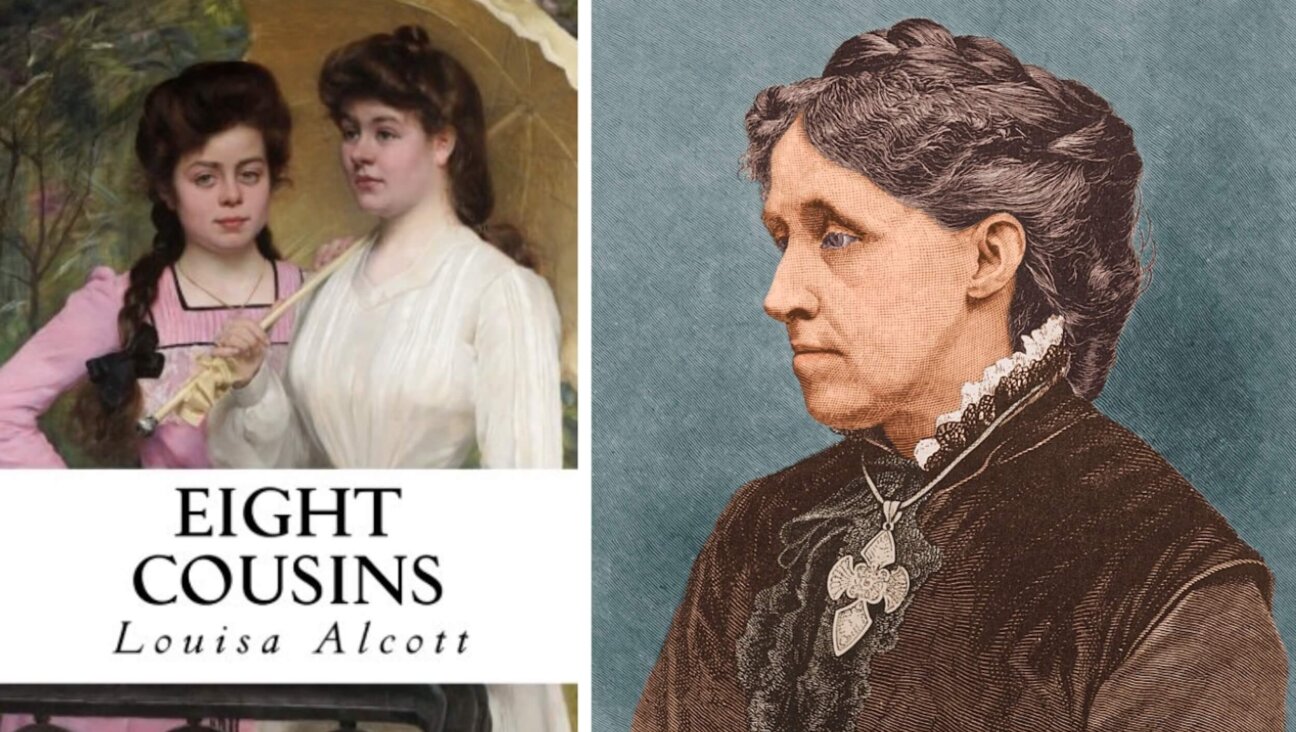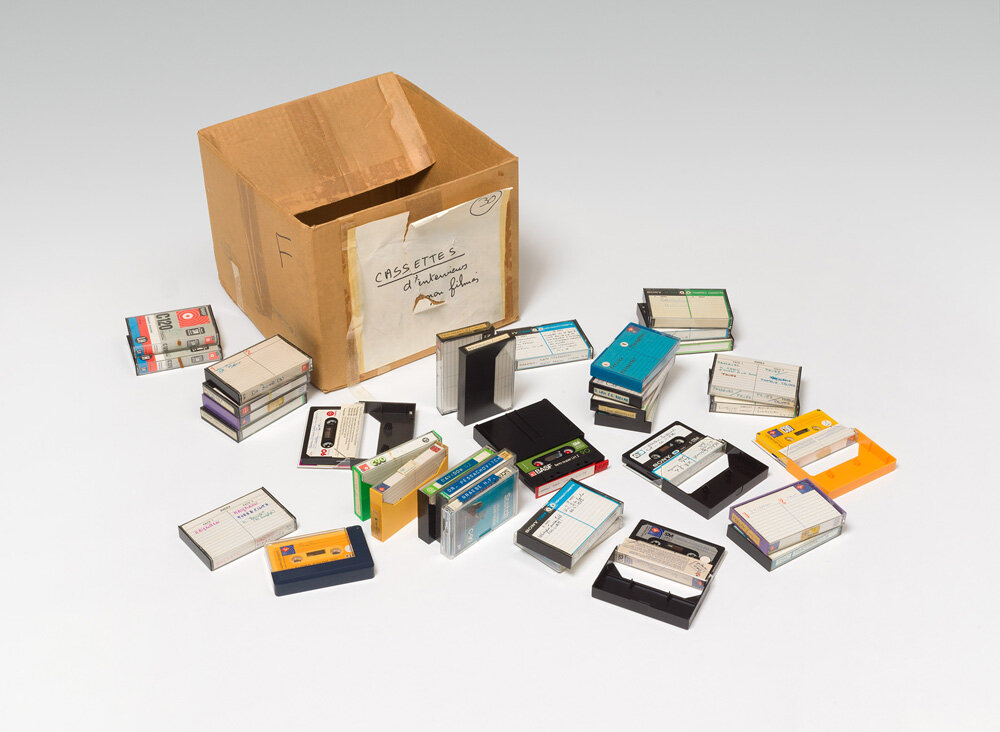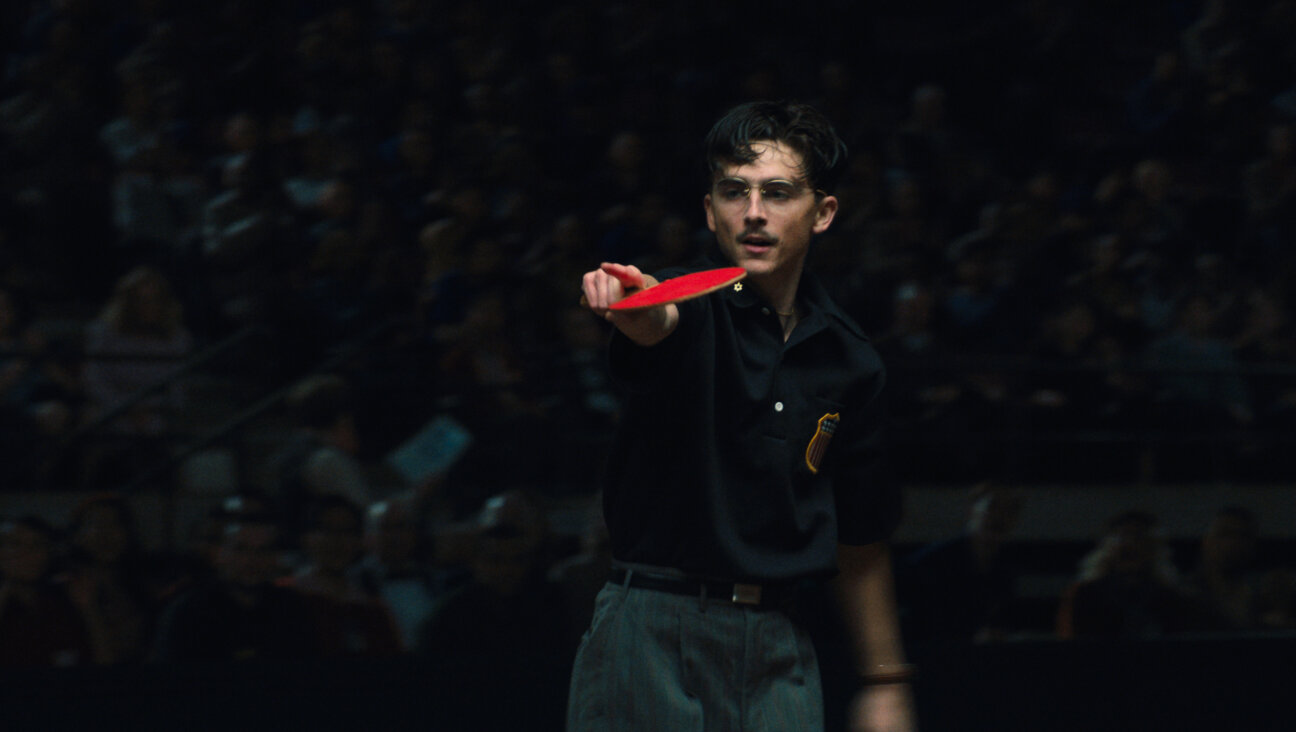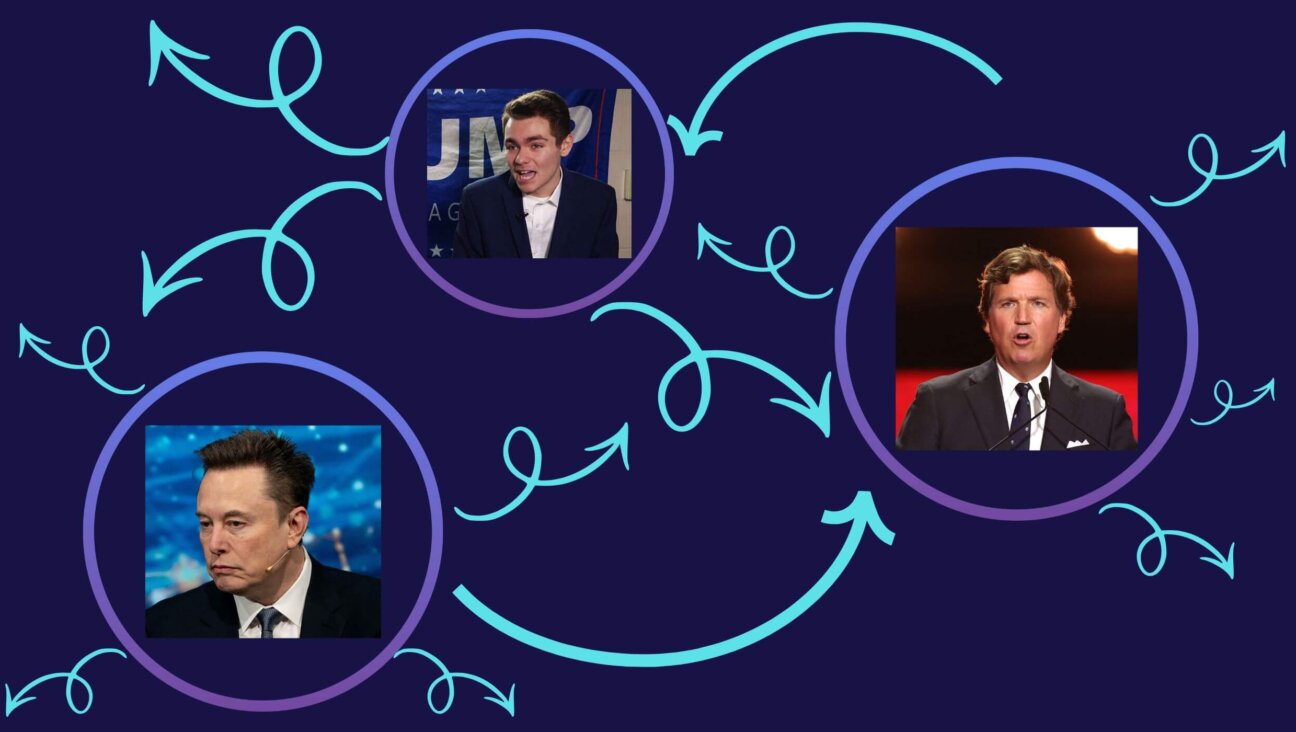Sly Stone was one of the funkiest performers on the planet — so why did he record this schmaltzy Doris Day tune?
‘Que Sera Sera’ by the Jewish songwriting duo Livingston and Evans was an anomaly in Sly Stone’s catalog
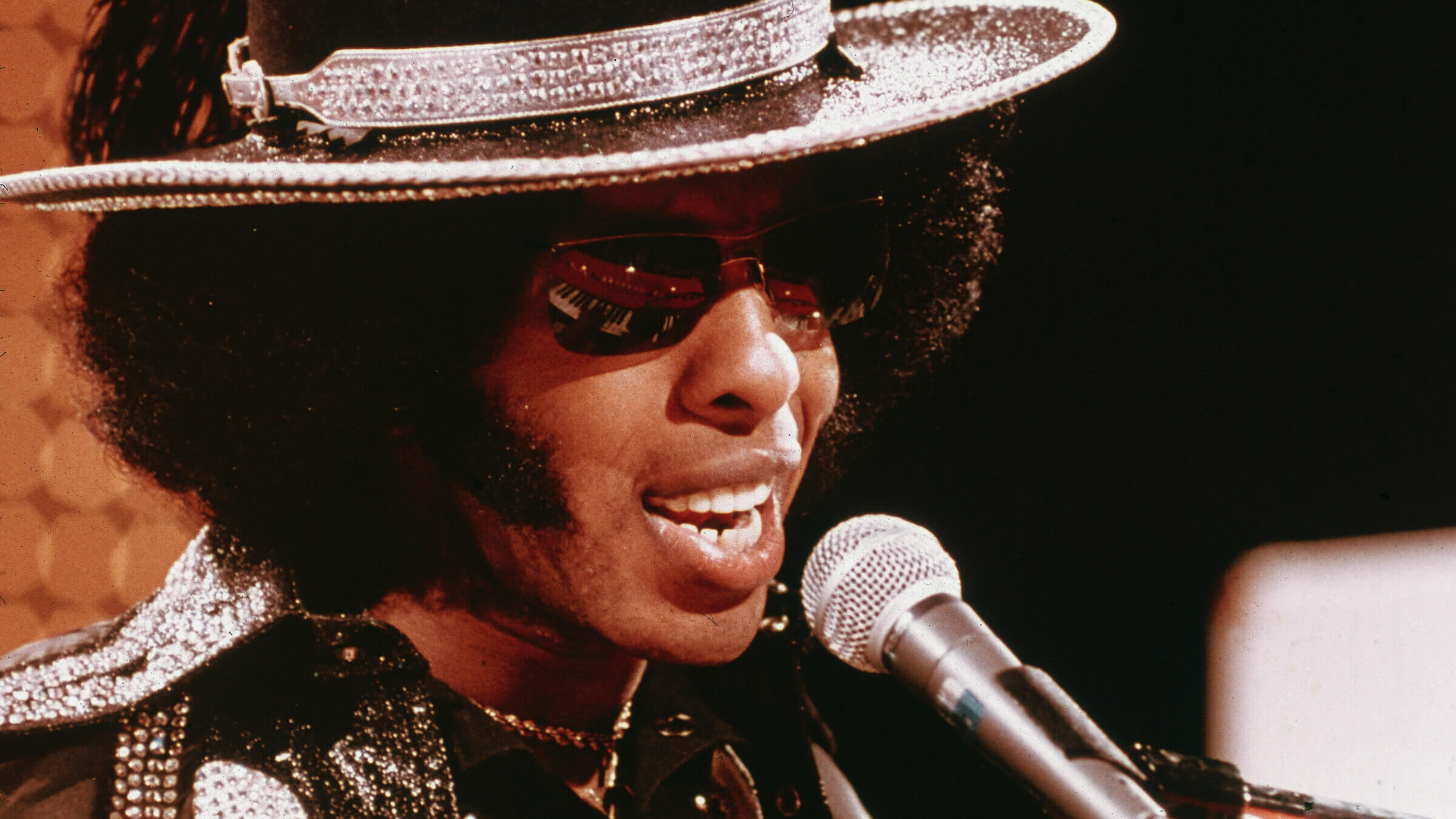
Sly Stone performing with his band Sly and the Family Stone on the television series ‘Midnight Special, ‘ circa 1974. Photo by Getty Images
I was heading down the street to my local ice cream parlor when an album sticking out from a record store sidewalk-sale bin caught my eye. The guy on the front of it was, without a doubt, the baddest dude I’d ever seen in my life — a lean Black guy in studded black leather, platform boots and a voluminous Afro, hurtling through the air with a giddy grin and a left foot angled upward to connect with, presumably, the chin of The Man. I was 11 years old at the time and not yet even remotely interested in buying records, so the name Sly and the Family Stone meant nothing to me; nevertheless, the funky fabulousness of Sly on the cover of 1973’s Fresh was forever burned upon my frontal lobe that day.
It took me another six or seven years to finally get hip to the groundbreaking mix of pop, soul, funk and psychedelia that the man born Sylvester Stewart (who passed away June 9 at age 82) and his groundbreaking band of racially integrated, mixed-gender musicians had bestowed upon our quite-possibly-unworthy civilization. I took the typical back-tracking route to Sly and the Family Stone discovery: First a copy of 1970’s unimpeachable Greatest Hits collection, followed by their 1969 breakthrough Stand! and the brilliant drug-bummer of 1971’s There’s a Riot Goin’ On. Some tracks, like “Everyday People” and “Stand!”, where uplifting, life-affirming anthems of acceptance and self-determination; others, like “Family Affair,” were noticeably skimpier on the good vibes. But they were all indisputably thrilling (and in some cases, brain-rewiring), and I marveled at the sheer genius involved in their creation.
The rest of their catalog was difficult to find, so it took me a few more years to track down the album I’d first glimpsed on my way to get a scoop of fudge ripple. By that time, I’d heard enough about Fresh to know that it was generally viewed as a more welcoming and danceable counterpart to the sludgy paranoia of Riot; what I was not at all prepared for, however, was the fact that it contained a gospel-ballad reworking of Doris Day’s “Que Sera, Sera (Whatever Will Be, Will Be),” a song that mostly reminded me of watching The Lawrence Welk Show with my grandparents. Sly’s sister Rose sang lead on the song’s verses, but Sly himself leaned into the choruses with such unsettling gusto, it was clear he didn’t mean this as a simple Rose showcase or a mere album-filling goof. As with all Sly’s work from his absolute peak — the four-year period bookended by Stand! and Fresh) — there was clearly some kind of thoughtful intent behind it.
The only cover song in the entire Sly and the Family Stone catalog, “Que Sera, Sera” was one of several classic hits from the Jewish songwriting duo of Jay Livingston (born Jacob Levison) and Ray Evans — the same Members of the Tribe responsible for the perennial Christmas favorite “Silver Bells,” Nat King Cole’s “Mona Lisa” and Andy Williams’ “Dear Heart” (the latter a co-write with Henry Mancini), as well as the themes for the hit 1960s TV shows Bonanza and Mr. Ed. But its path to hitdom was a strange one, even for the guys who’d written a song about a talking horse: It was written specifically at the behest of Alfred Hitchcock for his 1956 thriller The Man Who Knew Too Much, and recorded under protest by Doris Day, whom the director had been equally unhappy about casting in the film.
“We got a call from Alfred Hitchcock,” Livingston told author Paul Zollo in an interview for Zollo’s 1987 book Songwriters On Songwriting. “He told us that he had Doris Day in his picture, whom he didn’t want. But MCA, the agency, was so powerful that they said if he wanted Jimmy Stewart [to star in the film] he would also have to take Doris Day and Livingston and Evans… Hitchcock said that since Doris Day was a singer, they needed a song for her. He said, ‘I can tell you what it should be about. She sings it to a boy. It should have a foreign title because Jimmy Stewart is a roving ambassador and he goes all over the world.”

The song took its title from “Che Sera, Sera,” a catchphrase from the 1954 film The Barefoot Contessa, and set Evans’ fatalistic lyrics against Livingston’s lullaby-like melody. Hitchcock loved it, but Day was so dismayed by the song that she initially refused to sing it. “She didn’t want to record it, but the studio pressured her,” Livingston told Zollo. “She did it in one take and said, ‘That’s the last you’re going to hear of this song.’”
The joke was on Day, of course, “Que Sera, Sera” wound up going all the way to #2 on the US pop chart (and #1 in the UK), winning an Academy Award for Best Original Song — Livingston and Evans had won two previous Oscars in the same category, for “Buttons and Bows” in 1948 and “Mona Lisa” in 1950 — and would eventually come to be regarded as her signature song. Numerous covers of Livingston and Evans’ composition have been recorded, including versions sung in Danish, French, Japanese, Mandarin, Spanish, Swedish and Tamil, but it’s hard to beat Sly’s slow-burning rendition.
Why did Sly record “Que Sera, Sera?” The closest thing to a straight answer he ever gave on the subject was in his 2023 autobiography written with Ben Greeman, Thank You (Falettinme Be Mice Elf Agin): A Memoir. “’Que Sera, Sera’ was a gift to Doris Day, Terry Melcher’s mother,” he recalled. “For years people spread rumors that I dated her. I would never have done a thing like that. She was a nice lady, polite to me whenever I saw her, and a good singer. Terry played her original version for me one day, and right away I could hear how it could sound. It was like the covers we did back at Winchester Cathedral. Take something old, make it new. We made it new. We slowed it down. We thickened it up. We stayed loose. Rose messed up in the second verse. So what? An error is only something you do that others don’t. I have no idea what Doris thought about it. I never played it for her.”
It’s also possible that, in recording a grungily soulful take on a 17-year-old song made famous by one of America’s most squeaky-clean white entertainers, Sly was simply having fun playing racial stereotypes off against each other — or gently rebuking all the critics, activists and industry types who wanted to put him in a specific box as an artist or generational spokesman.
But it’s also easy to imagine that, at a point in his brilliant career where things were beginning to spiral out of his control, Sly was connecting with the song in a much deeper way. The classic Family Stone lineup was fraying — though the musician credits on Fresh are hazy, “Que Sera, Sera” is widely considered to be original bassist Larry Graham’s final studio contribution before leaving the band — his record company was pushing hard for a follow-up to Riot, and drugs and other distractions were causing him to miss concerts or turn up hours after the scheduled set time. With professional pressures mounting, the pills and powders delivering diminishing returns, and the Family Stone’s message of coexistence ringing increasingly hollow the further the band got from their ecstatic performance at Woodstock, maybe Sly just found some momentary comfort in Evans’ gentle reminder that “Whatever will be, will be.”


